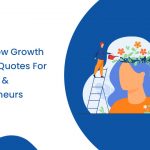There seems to be a false dichotomy being explored in the world today – Do we want Online or Offline learning? Do we want screens or people? Do we want digital information or textbooks? Why do we pit one against the other when technology and in-person learning so beautifully complement each other? And when they are used together in service of our students, they can have a greater positive impact on education than ever before!
Let’s take a deeper look at the upsides of each and how they might work in synergy.
Expert-led, individualised learning balanced with hands-on experiences, mentoring and support
Self-paced learning
In the last decade, fantastic computer-aided programs have emerged, providing students with two valuable opportunities. First, the ability to go through learning at their own pace and second, to receive immediate feedback on their responses. Both these are very hard to achieve with one-size-fits-all traditional approaches.
Multimodal, inclusive learning
Technology offers multiple modes for consuming knowledge, which traditionally was limited to text or lectures. Students can now learn through videos, access audiobooks, global communities and now a whole new world of virtual reality. Learning can be more inclusive because of tech tools like speech-to-text and the ability to enlarge the font size.
Learning Experiences
We know that learning by doing or discovering by experience is powerful. This is very difficult to achieve without in-classroom experiences (and teacher-led out-of-classroom experiences). Exploring places, experimenting, brainstorming ideas for a school play, project-based learning, sports, dancing, drama, creating art together – all these benefit from face-to-face interactions with teachers and peers.
Mentoring and Support
No matter how smart the computer-aided technology or how engaging the expert content is, it is rarely sufficient by itself. Teacher guidance through keen observation and thoughtful mentoring is always needed to help students reach their full potential. Students have all kinds of curious questions during the learning process and different kinds of struggles, which teachers – with content and pedagogical knowledge – must be there for.
Access to rich, relevant Information balanced with discussion for a deeper understanding
Rich, relevant information
Thanks to the internet, it is easier than ever for us to access rich, relevant information. When compared to its traditional counterparts, i.e., textbooks, it is a clear winner. We can find information on practically any topic we are studying and often from the most knowledgeable sources. For example, if I am studying about habitat, I can go directly to the national geographic for the most up-to-date information. Further, if I am looking for information specific to my city, I can conveniently search the news and other local sources for this information.
Expert Designed Learning
Technology has enabled learners to access the best Expert knowledge from all corners of the world. These experts understand the content deeply and often can explain important concepts with amazing clarity. With technology, students can access literacy expert instruction to build literacy skills. Students learn music from the best musicians in the world when they are made accessible through technology. It is very unlikely that students will have access to expert information on all subjects at a single school without the assistance of technology.
Discussion and Dialogue
A simple google search is not enough for students to navigate all this information. To gain a deeper, more meaningful understanding of information, they need to harness the power of discussion and dialogue. This is done most effectively with in-class conversations and group work. They need to be able to ask questions and share their thoughts with each other. They need to talk about connections to the world around them. The pandemic has shown us how important in-class discussions with teachers and peers is to facilitate deeper learning.
Purposeful use of modern tools balanced with writing for test preparation
Enhancing student capabilities
Technological tools have enhanced individual capabilities in so many ways in the 21st Century. We have digital tools to help us design, compute, communicate and present, analyse information and code. When children learn to use these tools effectively in schools it has the potential to enhance their learning tremendously.
Test Preparation
A big spoke on the wheels of change when it comes to adopting technology is that the mode of board examinations is much slower to change. Students are expected to demonstrate their learning by writing 2-hour long exams on pen and paper. Further, they are expected to do this without access to technology or information, something we have freely available in the 21st century. This is a mode that few adults use today to communicate their knowledge. Yet, as educators, it is our responsibility to help students succeed in tests that have an influence on their future options and careers. And so, these skills must be built alongside technology (until the examination process is transformed).
Intellectual Student Engagement balanced with socio-emotional student engagement
Engaging many students simultaneously
Here’s a simple maths problem: I have 40 students in a class and 40 mins to teach. How much talk time can I possibly give each student? Without technology, the answer is 1 minute per student, if the teacher says nothing. With technology, I can engage the minds of all 40 students simultaneously. How does it work? The teacher asks a question, the students write their individual responses on their devices and the teacher pulls up these 40 individual opinions on the screen in real-time. This is a game changer for large classrooms. Because we know that students need opportunities to participate and express their thinking in order to stay intellectually engaged during the learning process.
Engaging students socially and emotionally
Motivation to learn comes from curiosity and intellectual stimulation but also from safe, connected and caring relationships between students and teachers. Building relationships and rapport creates the conditions for students to thrive. During the pandemic, we discovered that technology could not replace the connectedness and warmth that is created through in-classroom interactions and corridor conversations. The bonding and joy that is brought about when the community comes together for celebrations, performing arts and sports events cannot be replaced by technology.
It is time for us – educators, parents and policymakers to recognize the immense value of both: technology-enabled and in-classroom learning. And move the conversation away from ‘this or that’ towards ‘win-wins’ for students!


